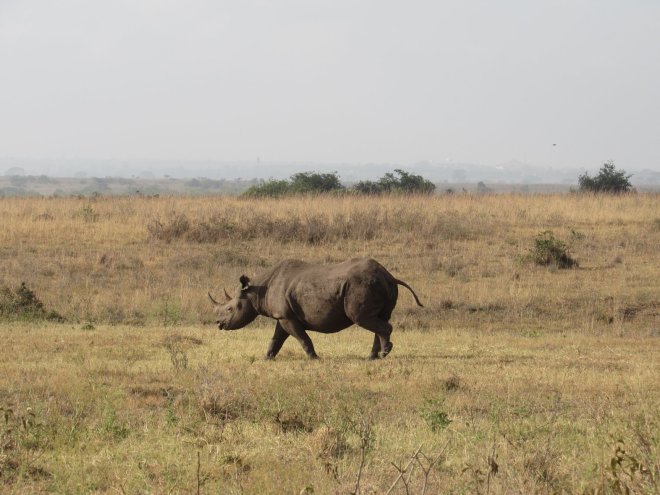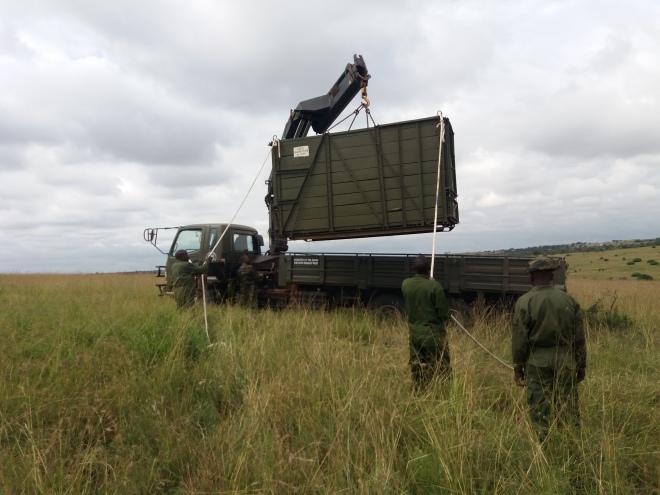The event of translocation in wildlife conservation has always been exciting and subject to scrutiny. Even more when the species that is going to be translocated is listed as Critically Endangered by the IUCN and there are around 5,000 individuals in the entire world. Black rhino translocation has been one of the major conservation efforts for the survival of the species. Normally it is from breeding areas or areas with a high population density to new habitats, where the carrying capacity is still low and there are effective protection programs, rhino sanctuaries.
Black rhino (Diceros bicornis) – Critically endangered (IUCN). The main threat is poaching for the international rhino horn trade. Rhino horn has two main uses: traditional use in Chinese medicine and ornamental use.

The best and greatest of my participation in a rhino translocation was that it came as a surprise, which has always a special feeling. Everything started when I was participating in the Workshop on the development of lion and hyena national recovery and action plan (2019-2024) in Kenya. Then, by chance, I realized there was a translocation event taking place in the Nairobi National Park the day after. After a few conversations, I managed to be present at this exceptional event.
Although each event is unique, there is always a general pattern. The translocation starts really early in the morning when a special team ― a combination of professionals; rangers, scientist, veterinarians, filmmakers and students ― received the last safety instructions for the rhinos and for the participants. The human team requires three trucks with three containers to transport the chosen individuals to Tsavo National Park, four cars and one helicopter to succeed in this enormous task. Teamwork and synchronization is essential to reduce the danger and the stress of the rhinos, and to decrease the time they will be under sedation.
The helicopter has the responsibility of rounding them up after which they are immobilized by veterinary doctors. Then, the team on the cars approaches and everybody proceeds with their duty; fecal sample collection, body measurements, implantation of transmitters, tissue samples extraction, health control…
Working close to a sedated rhino is always intense and sometimes happens that the individual may suddenly stand up when everybody is working around it. Therefore, being always ready for the unexpected to happen is key for a timing reaction and for the well-being of the animal.

Introducing the rhino into the container is also a delicate moment. The team is at the back of the rhino helping it to get inside the container when the rhino is receiving the antidote. Again the organisation is crucial to succeeding without any harm for the animal and the members of the team.
At the moment that the individual is inside the container ― clearly marked indicating the presence of a live animal―, the transport starts and it ends with its release in a new area, but this will be another story…






